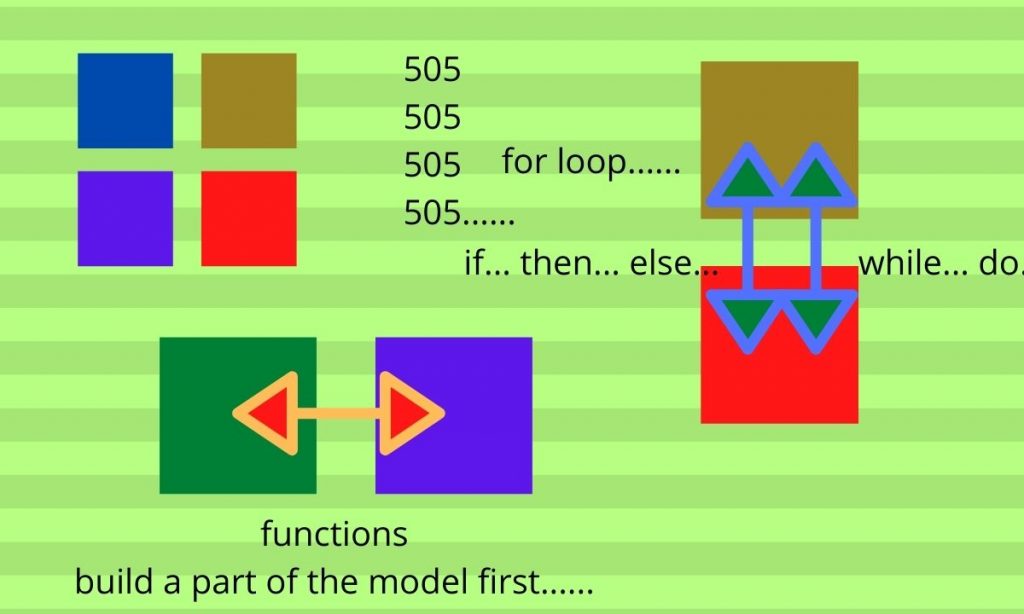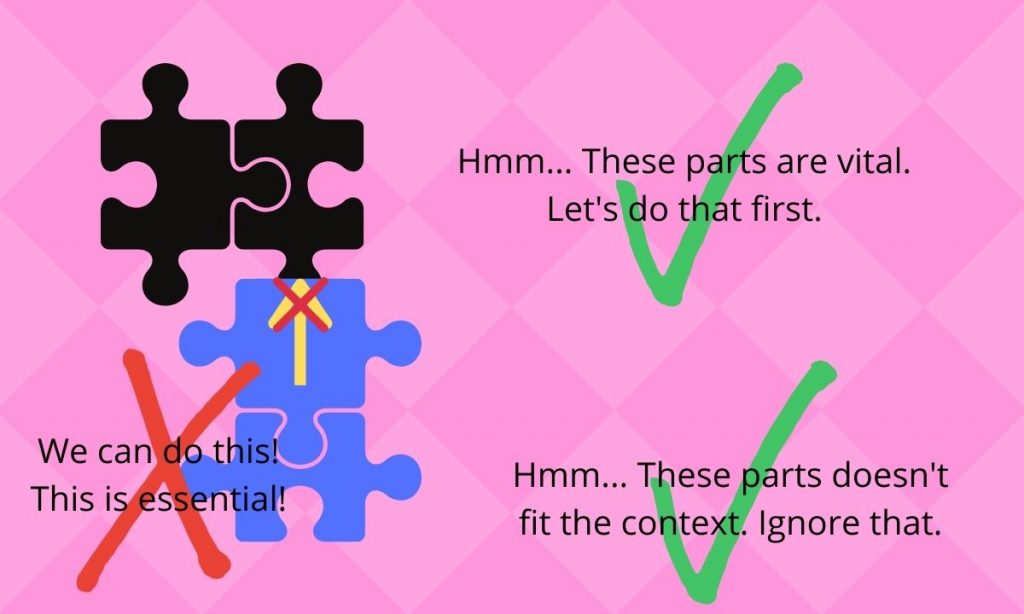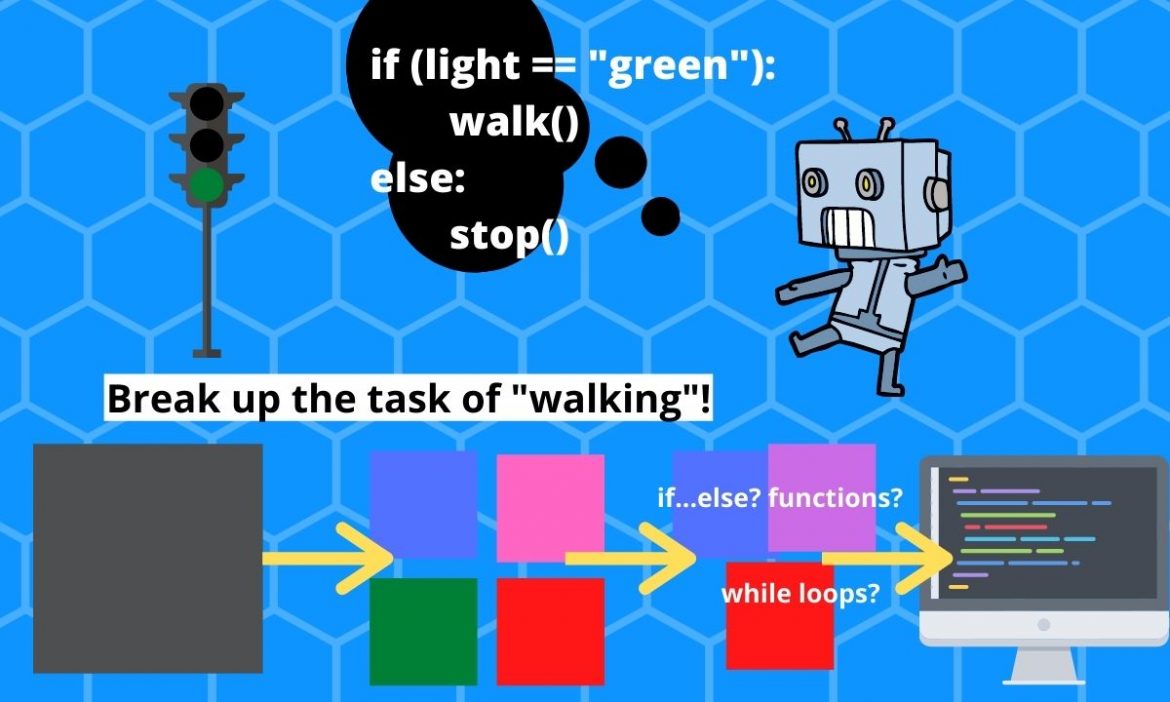When you’re learning to code, you’ve always heard of the phrase “Computational Thinking”. So, what is that? How does it provide advantages and benefits to your future life? Let’s find out the features of this “magic” technique.
An Introduction
Computational thinking does not necessarily mean the user must think like a computer. It only breaks up a task into tinier ones to solve difficult problems. In fact, it’s so simple that a child can understand the process. So, here are the four primary procedures of that:
- Decomposition
- Pattern Recognition
- Abstraction
- Algorithm Design
Decomposition
If you command a robot to walk one step, it’s probably not one line of code: walk, unless the actions are integrated into the language. For both computers and humans, walking even a single step requires many lines of code. Therefore, your task needs to be split into many instructions until they are readable by a computer.
When doing a STEM project, the steps are almost identical. The only difference is that it can’t be done right away with a human being. We still need to reference the instruction book, and break it down into many sub-steps, including conducting a research and experimenting with scientific theories using the scientific method.
For instance, if we’re controlling the robot to walk, we have to inspect how do we achieve the same thing. It isn’t exciting to explain that because we all know the approach. However, it’s vital to do that in a project. Once we’ve brought all the work into pieces flawlessly, let’s move on to the next step.
Pattern Recognition
After the verification of the last step, we have to connect the segments. Then, we must recognize the patterns first. If you encounter a program that returns an identical value 500 times, we won’t write the program from scratch. Even if you use the copy-and-paste function, it’s too easy to have bugs. Therefore, loops in programs are invented. Usually, that is a for loop or a while loop. This scenario is also suitable for sequences that can be resolved in a simple algorithm, including ascending or descending orders.
Furthermore, we can use that technique differently if the program may have two or more outputs. We can use conditionals (if... then... else...) to express when the code should make a specific decision with a reason.
Moreover, if we have to copy-and-paste lines of code to achieve actions in separate parts of a program, it’s not wrong to use functions. When some lines of code are needed out of the function’s declaration, we can save many bytes of data inside the file. Thus, if you need to insert the complicated “walk” function multiple times in the file, consider making it a function using the function declaration keywords.

Image Credit: Canva
Abstraction
Then, what should you do? The problem is still firmly there because we haven’t thought of the algorithm yet. However, we should ignore the small details first to have a better outline of what’s happening. Back to the “walk” function, you may need to consider dealing with the program core first for the robot to go forward. The on-screen activities and the balance system are not that essential in the first place, so we have to sequence our segments.
Moreover, if a SERP (Search Engine Results Page) is full of irrelevant webpages, you’d dislike the search engine or even quit using it, right? In fact, less than 1% of people go to the second page when conducting a web search, according to an article in backlinko.com. (Brian Dean, 2019).
Likewise, some challenging games enhance your abstraction skills by surrounding the player with distractions and leaving the essential hints behind. Therefore, the better they discover clues about the information’s relevancy like Google Search, the faster it will be for them to proceed.

Image Credit: Canva
Algorithm Design
Finally, we’re heading toward the final step — designing an algorithm of instructions. This time, rethink your product’s concept again. Maybe it involves random numbers. Perhaps the program is very dynamic and stores many variables. All in all, write your code according to your findings of the three processes.
Debugging
Moreover, we still have one procedure that we haven’t mentioned yet — Debugging. After writing a few lines of code, it’s best to run it on a platform or a simulator to spot any mistakes we made. Although we can read that code, computers have strict grammatical rules, and even a typo can be too confusing because they have no auto-correct options!
Computational Thinking and its Importance to your Future
Don’t be afraid of the lengthy procedures in the process — it’s actually a vital skill for any jobs you encounter!
For example, if you’re an accountant, expect the boss to initiate the project in just one order. But, it’s essential to figure out the small steps before calculating and comparing the business plans. Another way, if you’re a designer, you may have to break the picture up into blocks before thinking about the whole picture.
Moreover, coding is a beneficial technique, and computational thinking is indispensable in this field. When you design some apps, you have to make that process step-by-step. We have to think of the purpose and the function of the application, draw it, make some “screenshots”, and finally write your code. Don’t forget to spot every single problem and fix that because technical SEO is crucial.
Conclusion
So, here’s an introduction to computational thinking, its steps, and its purpose in the future. These steps apply when writing a blog post that ranks high on Google, too. We hope you can learn more about that skill and utilize that once you encounter a difficult problem to solve.
References and Credits
- Katie Victoria. (2018, December 29). What is Computational Thinking? Why thinking like a computer builds skills for success. Retrieved December 19, 2020, from https://teachyourkidscode.com/what-is-computational-thinking/
- (2020, September 22). How to develop computational thinkers | ISTE. Retrieved December 19, 2020, from https://www.iste.org/explore/how-develop-computational-thinkers
- Brian Dean. (2019, August 27). Backlinko Google CTR Stats. Retrieved December 19, 2020, from https://backlinko.com/google-ctr-stats

